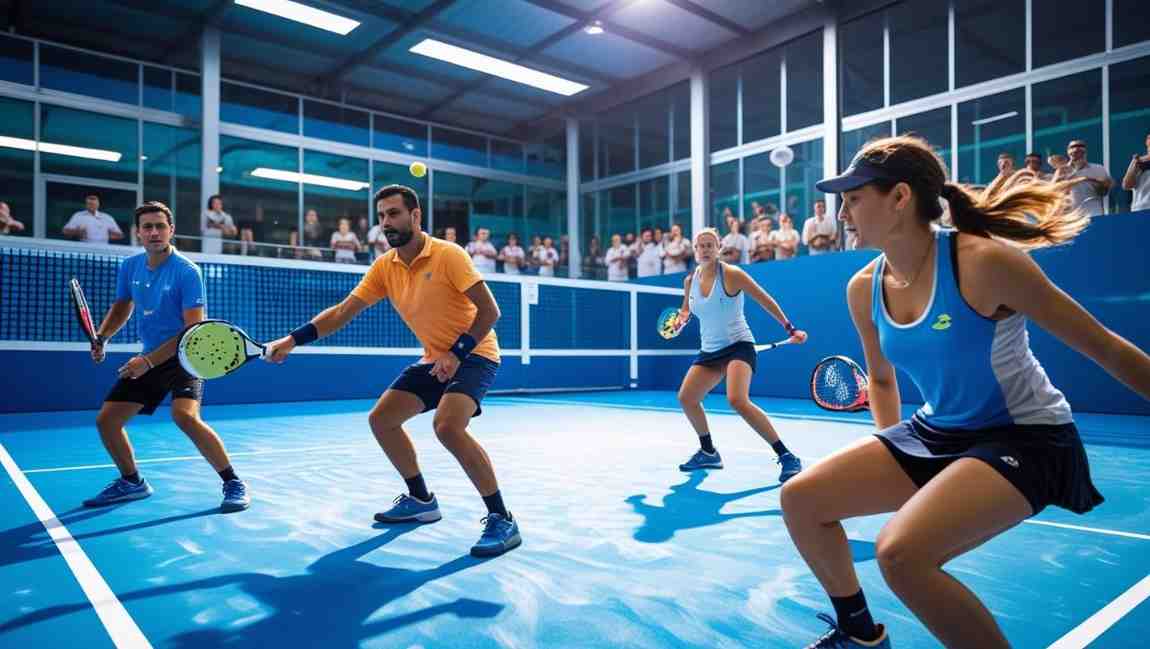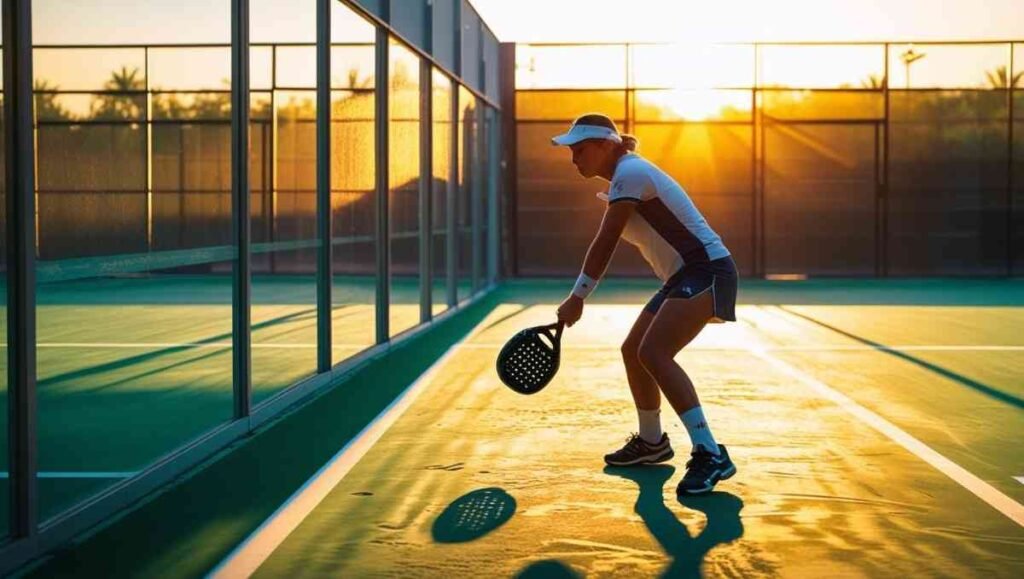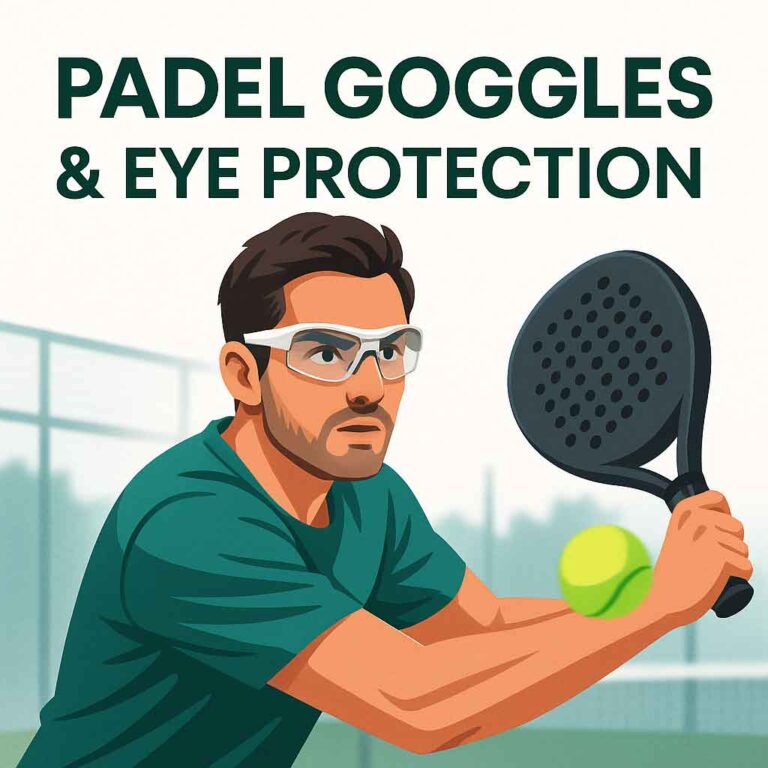Want a shortcut? Take a quiz and find your perfect Padel Racket in 30 secs.

Is Padel a Team Sport or a Solo Sport? Full Breakdown for Beginners
Many beginners wonder: Is Padel a team sport, or is it played solo? The answer is simple: it’s most commonly played in doubles. Yes, padel is primarily a team sport played in a doubles format, with two players per team. While singles padel does exist, it’s rarely practiced and not the official format in tournaments. Most courts and professional matches are designed for 2v2 play.
Padel’s doubles format makes it ideal for social interaction and strategic teamwork. Unlike tennis, where singles are standard, padel emphasizes communication, coordination, and shared positioning. It’s a sport where collaboration is key, not just skill.
Are you curious about whether Padel suits your style? Keep reading to explore whether singles or doubles are right for you—and why most players choose the team route.
Is Padel a Team Sport or a Solo Sport?
While solo play exists, padel is a team sport format that dominates clubs and tournaments. The doubles setup allows for more strategy, energy, and cooperation. Padel is officially recognized as a team sport, typically played in a doubles format, with two players per team. While singles matches are possible, they’re not the norm and require a smaller, specialized court.
Most padel courts around the world are built for doubles play. This format is also recognized in professional tournaments, including the World Padel Tour, making Padel a social and strategic game at its core.
The team-based nature of padel means players must work closely with their partners. Communication, court awareness, and quick decision-making play a bigger role than individual power or speed.
So, if you’re thinking of picking up Padel, expect a sport that rewards teamwork more than solo glory. Want to know if you’re the right fit for doubles? We break it down in the next section.
Also Read: Best Padel Rackets for Defensive Players – great if you play support on the court.
Why Is Doubles the Standard in Padel?
Because padel is a team sport that relies on communication, players must sync their strategies on the court. The court is smaller than a tennis court and has glass walls, which makes teamwork essential. With two players per side, you can cover more ground, handle fast rebounds, and execute coordinated strategies. Playing singles on a doubles court is not just difficult—it’s also tiring and unbalanced for most players.
Professional padel organizations, such as the World Padel Tour and the International Padel Federation, typically host doubles matches. Singles padel exists, but it is rare and normally played on specialized courts that are narrower.
If you’re new to the sport or looking to improve, playing doubles helps you learn court coverage, partner positioning, and shot combinations. That’s why most coaches and training programs focus on doubles techniques.
Are you looking to start playing Padel with a partner? Check out this best-selling padel racket set for doubles on Amazon _perfect for team play.
Ready for More?
- Best Nox Padel Rackets
- Nox vs Wilson: Which Padel Racket Brand is Better in 2025?
- Why Do Padel Rackets Have Holes
- Head vs Nox: Which Padel Racket Brand is Best for You?
- Best Padel Rackets for Kids: Features to Look For
- Why Do Some Padel Rackets Cause Elbow Pain & How to Fix It?
- How to Store Your Padel Racket Properly to Prevent Damage
Can You Play Singles in Padel?
Yes, you can play singles in Padel, but it’s not the standard format. Singles padel is played on a smaller, narrower court, suited for one-on-one play. However, these courts are rare and typically found in specialized clubs or training centers.
Playing singles on a regular doubles padel court is physically demanding. You’ll have to cover a lot more space, which increases fatigue and reduces match quality. It’s fun for practice or casual games but not suitable for competitive play.
In official tournaments and professional leagues, singles matches are not included. That’s because Padel is built on teamwork, communication, and partner synergy—key elements that disappear in singles.
If you’re practicing solo or want to improve footwork and endurance, singles can be a helpful drill. But for most players, doubles remains the preferred and practical format. If you’re going to succeed in padel, a team sport, practicing positioning and signals with your partner is key.
Seeking more guidance on the ideal format for your skill level? Explore our article on Best Beginner Padel Rackets: Top Picks.

How Teamwork Impacts Padel Strategy
In padel, a team sport, effective teamwork can be the difference between winning and losing a match. Teamwork is at the core of Padel’s strategy. Since most matches are doubles, success depends on how well you and your partner move, communicate, and cover the court together.
In Padel, you’re not just playing your own game—you’re constantly responding to your partner’s position and actions. Good teamwork helps avoid overlaps and leaves fewer open spots for your opponents to exploit.
Effective communication—both verbal and non-verbal—is essential. Players often call shots, signal plays, or nod to adjust positioning. For example, one player may move forward while the other covers the back, creating a balanced and flexible defense.
Another key factor is shot selection. In doubles, innovative teams target the weaker player or aim between opponents to force confusion. These tactics only work with strong coordination and teamwork.
So, while individual skill matters, strategic success in padel comes from playing as one unit, not two solo players.
Want to level up your padel coordination? Check out our post on 5 Best Padel Rackets for Professional Players to see how gear choice supports team-based tactics.
Is Padel a Good Sport for Social and Recreational Play?
Yes, padel is one of the most social racket sports you can play. Its doubles format naturally encourages teamwork, laughter, and bonding. Whether you’re playing with friends, family, or new partners in a local club, the game is built for interaction.
Because the court is smaller and enclosed, players are always close to each other. This setup makes communication easier and adds a fun, energetic vibe to matches. Plus, since Padel doesn’t rely heavily on brute strength, individuals of all ages and levels of fitness can enjoy it together.
Many beginners love padel because it feels less intimidating than tennis. It’s quick to learn, doesn’t require expensive gear, and most rallies last longer, making it more engaging from the start.
Padel clubs and communities are proliferating across the U.S., offering numerous opportunities for meetups, leagues, and social events.
Looking for an easy entry point? Explore our Best Padel Rackets to find the proper setup for casual play.

Can You Play Padel Solo, or Is It Always a Team Sport?
While padel is officially a doubles sport, solo formats do exist—but they’re less common. Most tournaments and club matches are designed for two players per side. This doubles setup promotes strategy, cooperation, and longer rallies.
However, some players enjoy practicing 1v1 matches for training purposes. These games help improve reflexes, footwork, and control. However, due to the court size, solo matches can feel tiring and less balanced. That’s why padel courts are built primarily for team play.
If you’re looking to train alone, consider solo padel drills using rebound walls or ball machines. These tools simulate gameplay, helping to sharpen your technique without the need for a partner.
Still, the social and tactical benefits of playing doubles are what make Padel truly unique.
Want to play smarter in doubles? Check out our Best carbon fiber padel rackets to master placement and teamwork.
Conclusion – Is Padel a Solo Sport or a Team Effort?
Many people assume Padel can be played solo, but most matches you’ll see—and play—are in doubles. If you’re looking for a fun, social, and fast-paced activity, padel a team sport might be perfect for you. That’s why Padel is a team sport structure that is the default worldwide.
If you enjoy fast-paced rallies, teamwork, and strategic coordination, padel is the perfect fit. Playing with a partner makes every point more exciting—and you learn quicker, too.
Ready for More? You’ll Love This Insight
- How to Choose the Right Padel Racket
- Best Babolat Padel Rackets
- Head vs Babolat: Which Padel Racket Brand is Better in 2025?
- How to Maintain Your Padel Racket for Maximum Longevity
- Best Padel Rackets for Women
- Best Padel Rackets for Men
- Nox vs Adidas – Which Padel Racket Brand is Right for You 2025?
- The Difference Between Fibreglass and Carbon Padel Rackets
- How to Replace the Grip on a Padel Racket
- Can You Use a Tennis Racket for Padel?
- Head vs Wilson: Which Padel Racket Brand is Better in 2025?
- Best Padel Racket Accessories
- Head vs Adidas: Which Padel Racket Brand is Best for You?
- Adidas vs Wilson: Which Padel Racket Brand is Better?
- The Evolution of Padel Rackets Over the Years
- Nox vs Babolat: Which Padel Racket Brand is Better in 2025?
FAQs
Padel is mainly played as a doubles sport, with two players on each side of the court. While singles matches exist, the standard format is team-based.
You can practice padel alone using rebound walls or ball machines. However, official matches and competitive games are typically played in a doubles format.
The padel court is smaller than a tennis court but enclosed. The doubles format makes rallies more dynamic and strategic, which suits the court size and design.
Yes. Single padel courts are narrower and less common. Most clubs and tournaments utilize standard doubles courts to support the team-oriented nature of padel.
Both! Padel is ideal for social interaction due to its doubles format but is also fast-paced enough for serious competitive matches.






